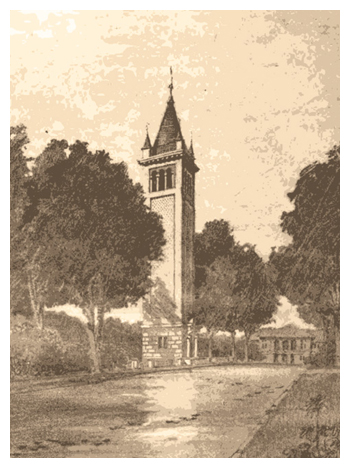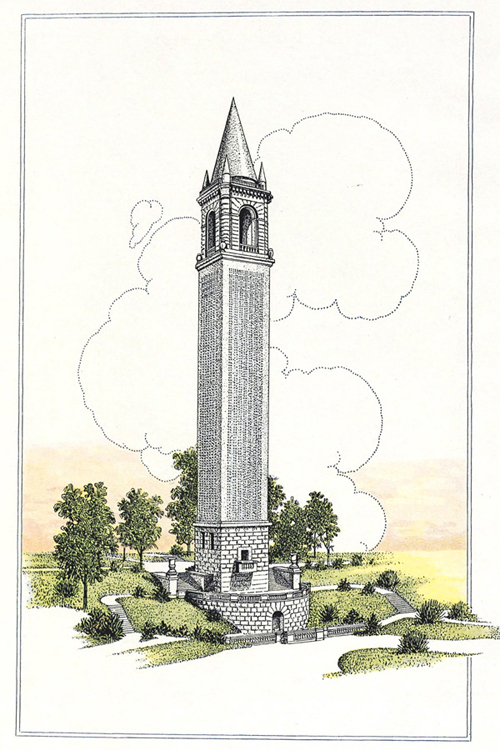THE WORLD WAR MEMORIAL TOWER (1919) |
||
Back in the summer 1919, with the war just ended and troops still streaming home from France, the university community began discussing an appropriate memorial for those who'd served, those who'd been wounded, and those who'd died. In June 1919, the university alumni voted on the proposals of a committee headed by university benefactor Wilbur H Siebert. The tower was far-and-away the favorite of the attendees. Memorial arches at the 15th Ave and Neil Ave entrances to campuses were the next most popular idea. |
|
|
The campanile--a free-standing bell tower in the Italiante style--would have stood on the north bank of Mirror Lake and would have lined up with the entrance and tower of University Hall. The tower would have soared almost 80' and been the tallest building on campus. The tower would have been covered with blue stars honoring Buckeyes who served and gold stars for Buckeyes who fell. Bronze plaques inside would record their names. The bells from Orton would’ve been relocated to the new tower. Announcements were made to the press. Artists' versions of the tower were distributed. Plans were drawn up. The proposed tower was featured in the beginning of the 1919-20 Makio and the alumni magazine. A campaign was drawn up to raise $100,000 ($1.4 million in 2019 dollars.) from alumni for the memorial's construction. Then, in the fall, things changed. Ohio State just missed winning its 3rd Western Conference football championship in 4 years by only 2 points. All season long Ohio Field was overwhelmed by fans and hundreds had to be turned away. Football mania turned into the drive to build Ohio Stadium. Feelings about the war began to change too. The nation wanted to move on. The patriotic fever of 1917-19 dimmed quickly. The public was eager to forget the privations and losses of the war years. Returning veterans--who had survived the bloodiest battles in American history and seen the hell of industrialized warfare--were not eager to revisit their nightmare. The campaign for the memorial fell by the wayside. Not until 1926, would campus have any sort of a war memorial and then a much more modest one. |
||
 |
||


